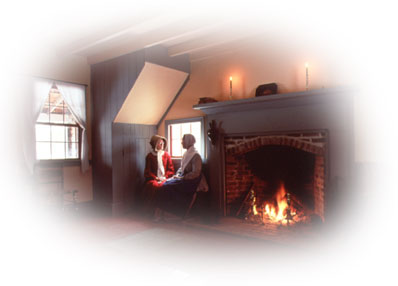402 South Lincoln Highway
Lerna, IL
217/345-1845
Open:
Sept-May: Wed-Sun 9 a.m. – 5 p.m.
Memorial-Labor Day: Mon-Sun 9 a.m. – 5 p.m.
Teachers in Illinois schools (grades prekindergarten through 12) can apply for grant funds to visit this site on a field trip with their students.

Located on the Lincoln Highway, eight miles south of Charleston, Lincoln Log Cabin preserves the site of the last home and farm of Abraham Lincoln’s father and stepmother, Thomas (ca. 1778-1851) and Sarah Bush Lincoln (1788-1869). The Lincolns moved to the farm in 1837.
Featured at the site are two “living history farms” that portray recreated agricultural practices as they existed in 1840s Illinois—the Thomas Lincoln Farm and the Stephen Sargent Farm. About 10 acres of “period” crops are cultivated, along with a hay field. Animals include teams of working oxen and horses, several sheep, and hogs similar to the razor-backs with which 1840s Illinois farmers were familiar.

At the Lincoln Farm, interpreters carry out generations-old agricultural activities that may have been practiced by Thomas Lincoln and his extended family of stepchildren. A replica of his last home, erected in 1935 by the Civilian Conservation Corps, sits in the location of the original cabin. Nearby is a large nineteenth-century log double-crib barn, moved to the site in 1981. Reproduction nineteenth-century farm structures include a log smokehouse, a well, root cellar, hog pens with hog shelters, a sheep pen, chicken house, and numerous garden and orchard fences. At the Lincoln Log Cabin “living history farms,” guests may observe and experience 1840s Illinois farm life. Costumed interpreters cultivate the fields, care for the animals, and work at domestic chores. In the summer, interpreters assume character roles for “first-person” interpretation.
The Moore Home is the site of President-elect Abraham Lincoln’s last visit with his beloved stepmother Sarah and family before traveling to Washington, D.C. on January 31, 1861. The home is that of Sarah’s daughter Matilda and her husband Reuben Moore. The 1.5 story frame structure dating to the late 1850s, was reconstructed by the Civilian Conservation Corps in 1936 and has been furnished with 1860s period pieces.
The Sargent Farm is named for New Hampshire native Stephen Sargent (1797-1878). With his wife and four children, Sargent lived in the house from its construction in 1844. This portion of the site portrays the practices of a farmer strongly influenced by printed agricultural literature. The centerpiece of this farm is the 1½-story, timber-framed 1844 “Sargent House,” which has been “restored” to an 1845 appearance. Also part of the farm are two historic stables, two historic corn cribs, a historic smokehouse, newly constructed log kitchen and stable buildings, a garden, and an orchard.

The visitor center contains museum exhibits, the Sargent Art Gallery, an auditorium with an orientation video, and a visitor information desk. In the park is a pavilion and three day-use areas for picnicking and recreation. Adjacent is an eight-acre prairie plot.
Lincoln Log Cabin hosts several special events. Many programs are supported by the Lincoln/Sargent Farm Foundation.
Paved parking with handicap parking available. The ramps to the visitor center have railings on both sides, there is no push button door opener. Restrooms and water fountains are accessible and there are benches in the visitor center lobby. The main exhibit gallery does not have braille but there is audio. There are no guided hikes.
Parking lots are asphalt paved and there is handicap parking adjacent to the handicap ramp (with railings) between the parking lot and Visitor Center.
Sidewalks from parking lot to the Visitor Center and the historic farmsteads are poured concrete.
Boardwalk ramps into historic farmsteads are 5’-8’ in length.
The paths from the Visitor Center to the historic farmsteads is paved; approx.. 350’ and 600’ respectively.
Accessibility Information
The following are available for the visitor to the site:
Lincoln Log Cabin State Historic Site has paved parking lots, handicap parking and handicap accessible restrooms available. Pathways leading from the Visitor Center to the historic farmsteads are paved and the historic homes have wheelchair accessibility.




